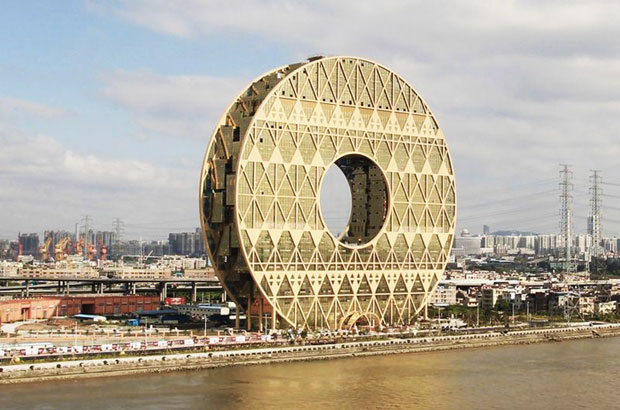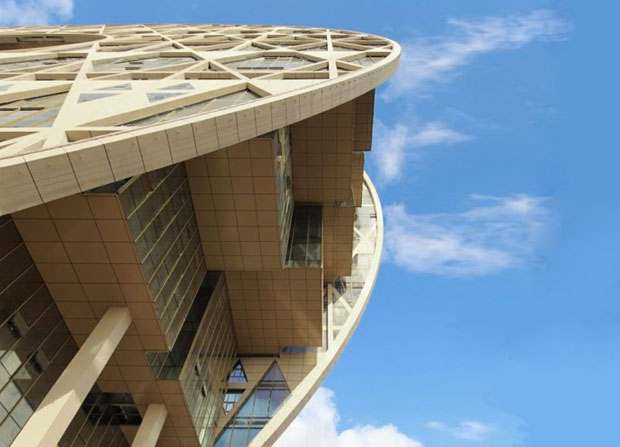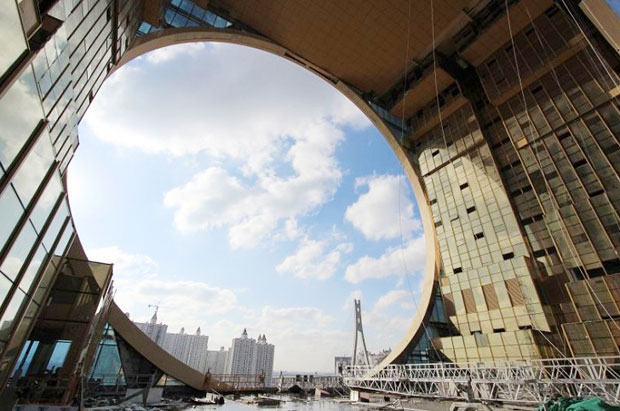
The Circle Skyscraper is complete
China's latest 'round building' tops out in Guanghzou courtesy of Milanese architects AM Project
Back in 2009, when skyscrapers were already two a penny in many of China’s mushrooming conurbations, Milan-based architects AM Progetti determined to buck this trend with their competition entry for a new office block.
For the home of the GDPE Guangdong Plastic Exchange (the world's largest stock exchange for raw plastic material, no less) they proposed a 138m-high, 33-storey doughnut.
“The inner hole is a unique space that has no equal in the world with its almost 50m of diameter,” said AM Progetti founder Joseph di Pasquale of the Guanghou Circle Mansion.

And now it's completed, it certainly takes the breath away. Perched on the waterfront of Guangzhou, the reflection of the building in the water creates a figure 8, the Chinese infinity symbol.
The architects have a host of reasons for the building’s form, many of which fan out from the fact that a double disc of jade is the royal symbol of an ancient Chinese dynasty. It's probably worth noting that despite appearances, in reality the structure itself is not actually that round. While the actual office block has normal horizontals and verticals, it’s the metallic interlaced disc-like facades on the back and front which are circular.

Inside, the penthouse floor is devoted to Mr Zhou Yi Feng, CEO of the Guang Dong HongDa XingYe Group, whose offices are just below, along with a seven star hotel. Next down are seven floors of ‘international standard offices to rent’, and below that several floors of ‘Chinese standard offices to rent’. The trading floor itself sits directly under the 'doughnut’s hole', while the four lowest floors are taken up with retail space.
Regardless of the origins of its inspiration and its associated aesthetic merits, this building is likely to do for Guangzhou what OMA’s CCTV building - commonly referred to as the underpants building - did for Beijing. You can see many more examples of Chinese architecture in the Phaidon Architecture Travel Guide App and if you're interested in Chinese culture and art be sure to take a look at The Chinese Art Book.